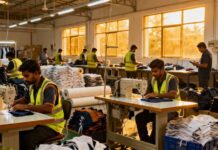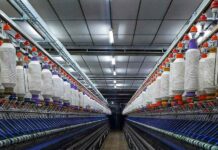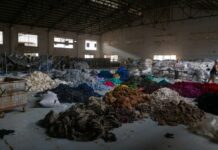On July 28, 2025, diplomats from the United States and the European Union emerged from months of negotiations to announce a new, sweeping transatlantic trade agreement. At its heart lies a significant policy shift: a flat 15% tariff applied to most EU exports entering the U.S., including textiles and apparel. This decision, meant to avoid a more punishing 30% tariff the previous administration threatened, is set to redefine the economic landscape for textile producers, brands, retailers, and consumers on both sides of the Atlantic.
Context: Defusing a Trade War
For most of 2024 and early 2025, commercial tensions escalated between Washington and Brussels. Disputes over digital taxes, agricultural policy, and technology transfers drove trade talks into a stalemate, with both sides issuing tariff threats that sent shivers through global supply chains. The textile sector—a linchpin of European manufacturing and a sensitive segment for U.S. brands—found itself in the crosshairs.
By late July, both sides faced the prospect of a full-blown trade war. The compromise was a 15% blanket tariff for a wide basket of sectors, including textiles, to stave off even stiffer penalties. While the arrangement may have defused an immediate crisis, its long-term effects signal a period of turbulence for the textile sector.
How the Deal Impacts Europe’s Textile Industry
Loss of Price Advantage in the U.S. Market
European textile exporters have long relied on the U.S. as a key market, with flagship brands in Italy, France, Spain, and Portugal carving out niches at both the luxury and mid-market tiers. The sudden imposition of a 15% tariff strips these companies of their price advantage—European goods will now carry a higher cost than competing U.S. and third-country products.
For many producers, especially those positioned in fashion-forward but price-sensitive segments, this new tariff will be a formidable barrier. Brands and manufacturers will face a stark choice: absorb the additional costs and see profit margins shrink, or attempt to pass on the increase to customers, at the risk of losing market share.
Profit Margins Squeezed, Jobs Jeopardized
The European textile sector is already under extreme competitive pressure from low-cost Asian producers. The new U.S. tariff only intensifies this squeeze. Industry leaders warn that the extra burden could lead to revenue declines, factory slowdowns, and genuine job losses—particularly in traditional textile hubs like northern Italy, Catalonia in Spain, and certain French regions.
The industry’s response has been swift and critical; associations representing manufacturers caution that even though the deal is better than the threatened alternative, it sets the stage for contraction, not growth. Producers now eye alternative export markets in Asia and the Middle East, but breaking into new regions takes time, adaptation, and investment.
Strategic Shifts and Accelerated Re-Localization
As access to the U.S. market becomes more difficult, some European textile companies are expected to double down on localization strategies—producing more goods for domestic or EU audiences, or focusing on niche, high-value segments less vulnerable to cost shocks. Others may consider partial production offshoring or forming alliances with non-EU partners to circumvent trade barriers.
Regardless, the headwinds are strong. Industry observers expect an uptick in lobbying for EU-level support measures, from financial assistance packages to innovation investments designed to help exporters weather the tariff onslaught.
Effects on the U.S. Textile Industry
Short-Term Competitive Gains
On paper, the new tariffs should provide a modest shot in the arm for U.S.-based textile producers. With European imports less price-competitive, American manufacturers and brands hope to capture a greater share of the domestic market. Some factories shelved by offshoring trends may see modest increases in activity, and brands that had been struggling with overseas competition could gain breathing room.
Pain for Retailers and Consumers
But this protection comes at a cost. U.S. retailers that rely on European imports—especially at the mid-range and luxury levels—now face higher costs. Many will attempt to pass these costs on to consumers. Early analyses forecast that retail prices for clothing and footwear could rise by 37-39%. The impact will be particularly sharp in premium categories but will ripple across all segments, reshaping consumer choices and spending patterns.
In response, U.S. retailers are actively diversifying supply chains, accelerating procurement from Asia, Latin America, and Africa. This global juggling act, while intended to maintain variety and keep prices in check, adds complexity and risk to already stretched post-pandemic logistics networks.
Long-Term Structural Shifts
The deal may galvanize American efforts to revive and modernize domestic textile production, especially with ongoing government initiatives targeting industrial re-shoring. However, ramping up capacity, especially for higher-quality or technical textiles once sourced from Europe, is not a quick fix. Other brand strategists predict a “flight to flexibility”: more partnerships, investment in digital supply chain management, and, in the medium term, a more regionally-focused product offering.
Global Implications and the Competitive Threat from Asia
One of the less-scrutinized consequences of the US-EU deal is its effect on global textile competition. As transatlantic trade becomes pricier and more complicated, Asian exporters—operating outside the scope of the new tariffs—stand to benefit. Both U.S. and EU buyers may look increasingly toward suppliers in China, India, Bangladesh, and Vietnam. This could further entrench Asia’s position as the world’s textile and apparel powerhouse and complicate Western policymakers’ efforts to reorient supply chains away from the region for strategic or geopolitical reasons.
Political and Policy Responses
In Brussels, the deal has prompted fierce debate. Policymakers who supported the compromise as a means to “restore stability” now face demands from industry groups and affected member states for clear mitigation strategies. Proposed measures include increased export promotion funding, R&D grants for textile innovation, and even targeted subsidies for regions hit hardest by lost business.
In Washington, the administration portrays the deal as a win for American manufacturers, but consumer advocates worry about price inflation and reduced choice. Some legislators have called for parallel efforts: using the revenue from new tariffs to support both domestic production and low-income consumers facing higher costs.
Conclusion: Managing Disruption
The July 2025 US-EU trade deal represents a pivotal moment for the textile industry. Avoiding a trade war was important, but for textile producers, it feels like a pyrrhic victory—a softer blow than feared, but a blow nonetheless.
-
For Europe’s textile manufacturers, the challenge is steep: adapt, innovate, and look beyond the Atlantic for future growth.
-
U.S. producers enjoy a brief window of protection, but face complicated supply realignments and the challenge of rising prices.
-
Consumers on both continents, ultimately, will likely pay higher prices as brands and retailers adjust to a new normal.
In the end, the deal signals a decisive shift in global textile dynamics. Whether it spurs renewal and innovation, or simply accelerates consolidation and outsourcing, may depend on how industry leaders, entrepreneurs, and policymakers respond to this new transatlantic reality.

































